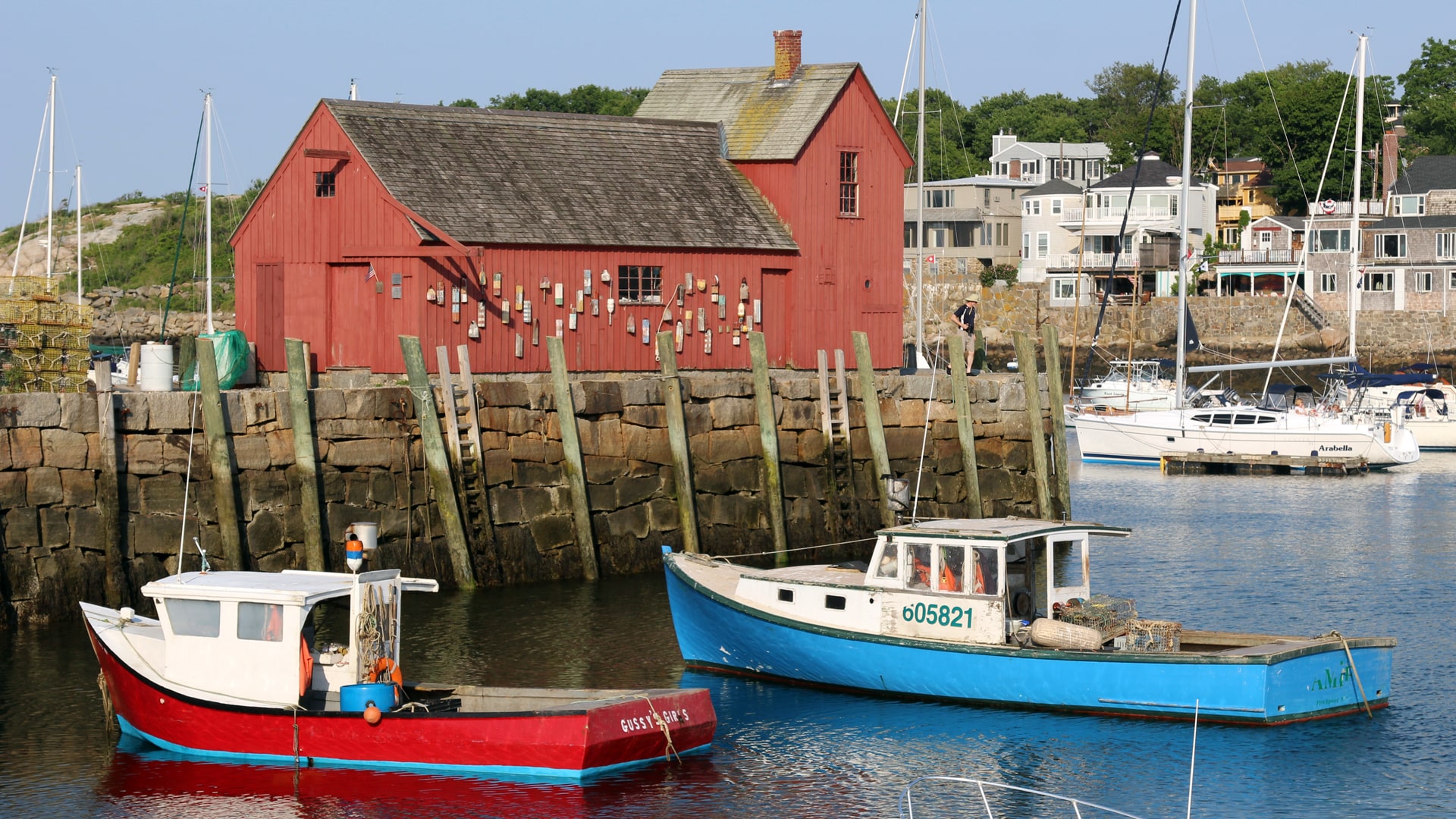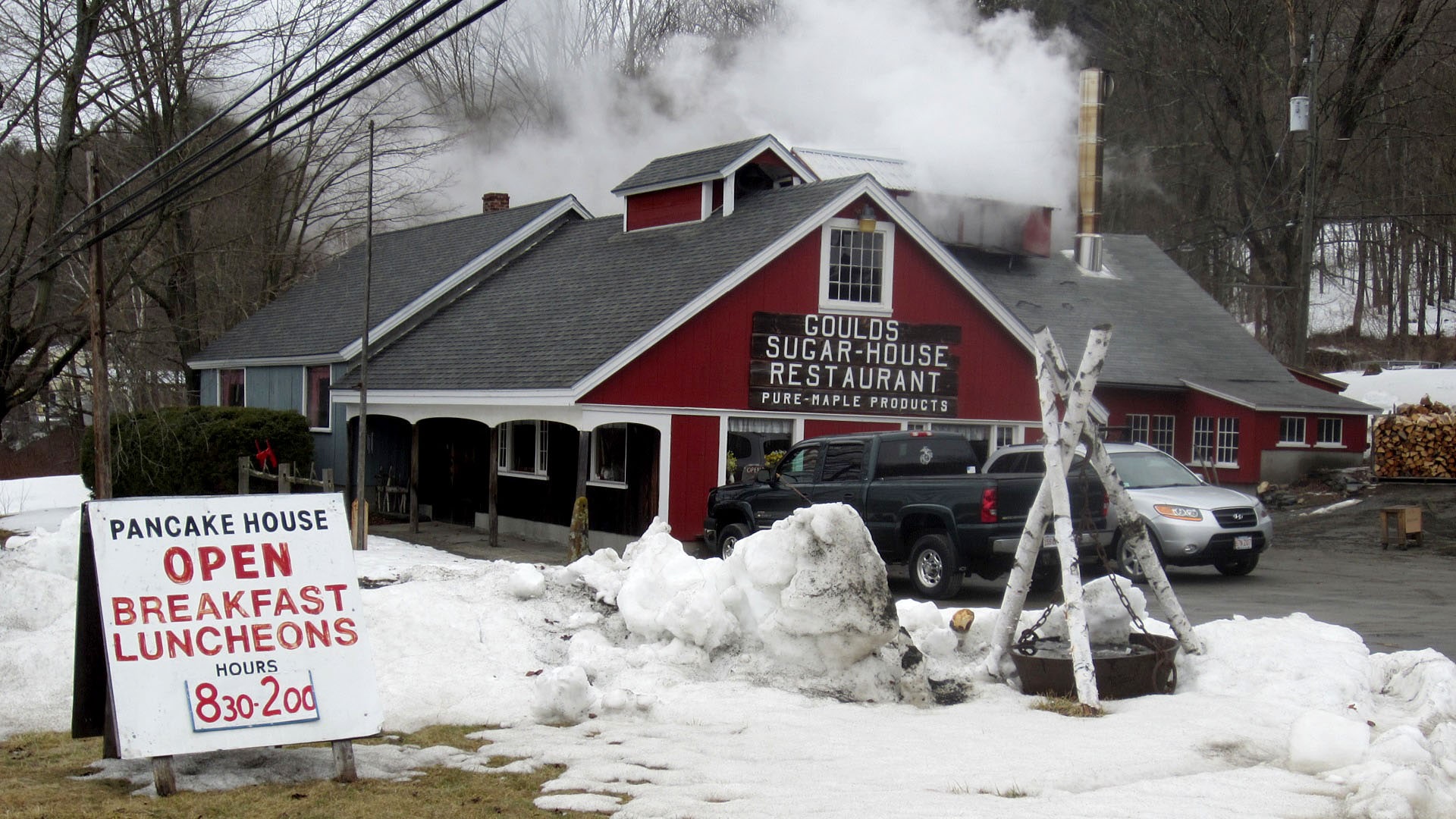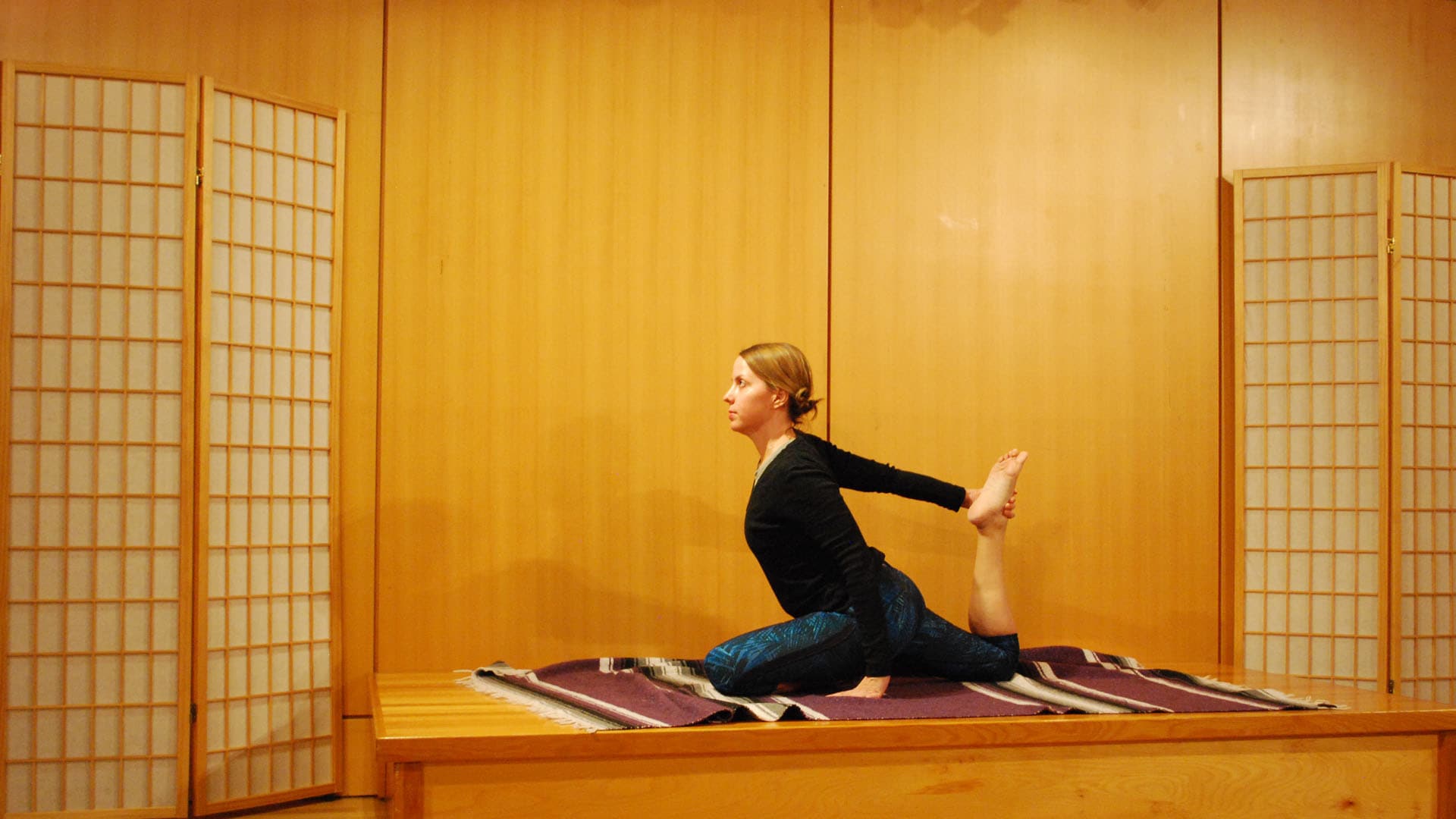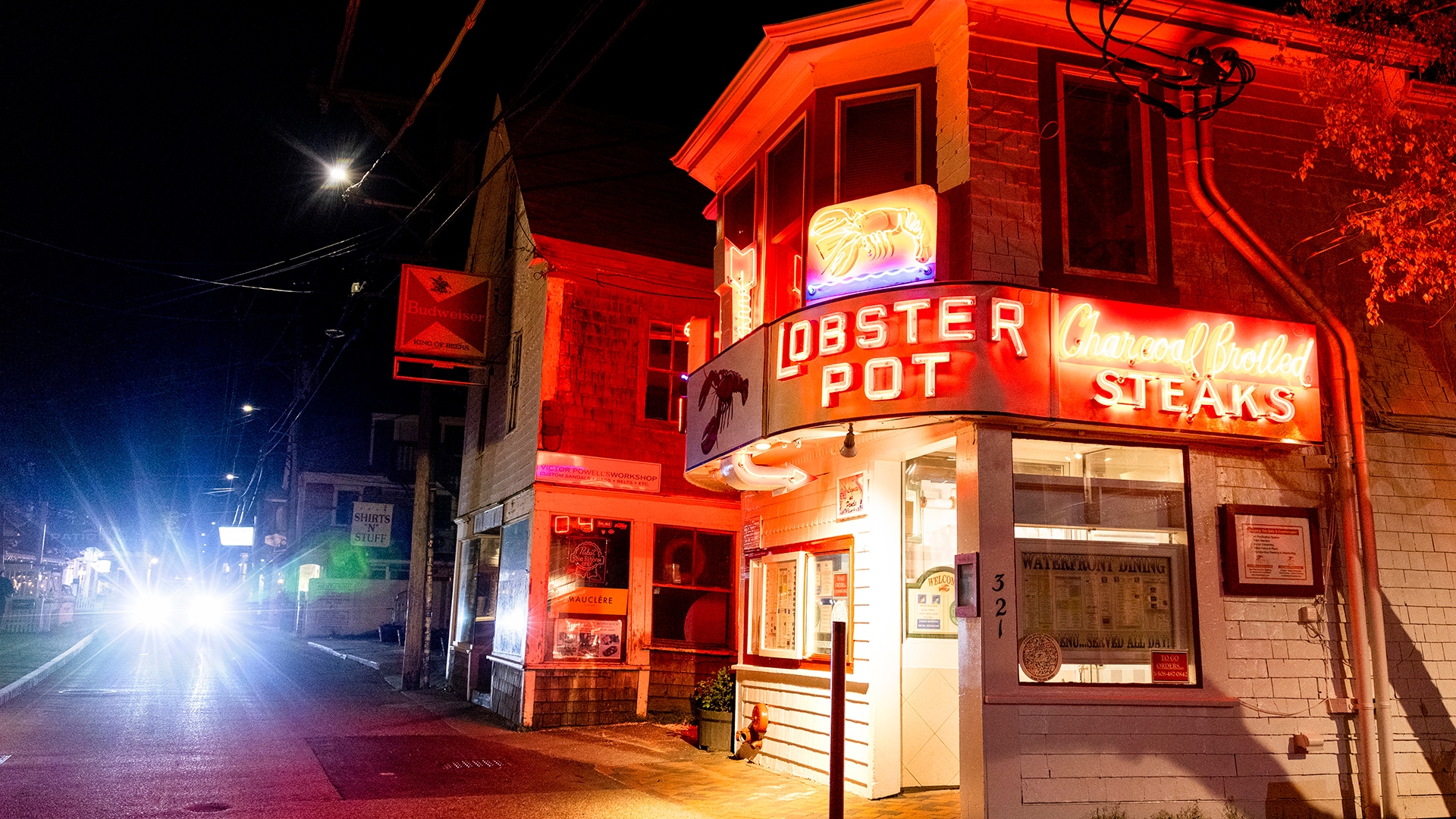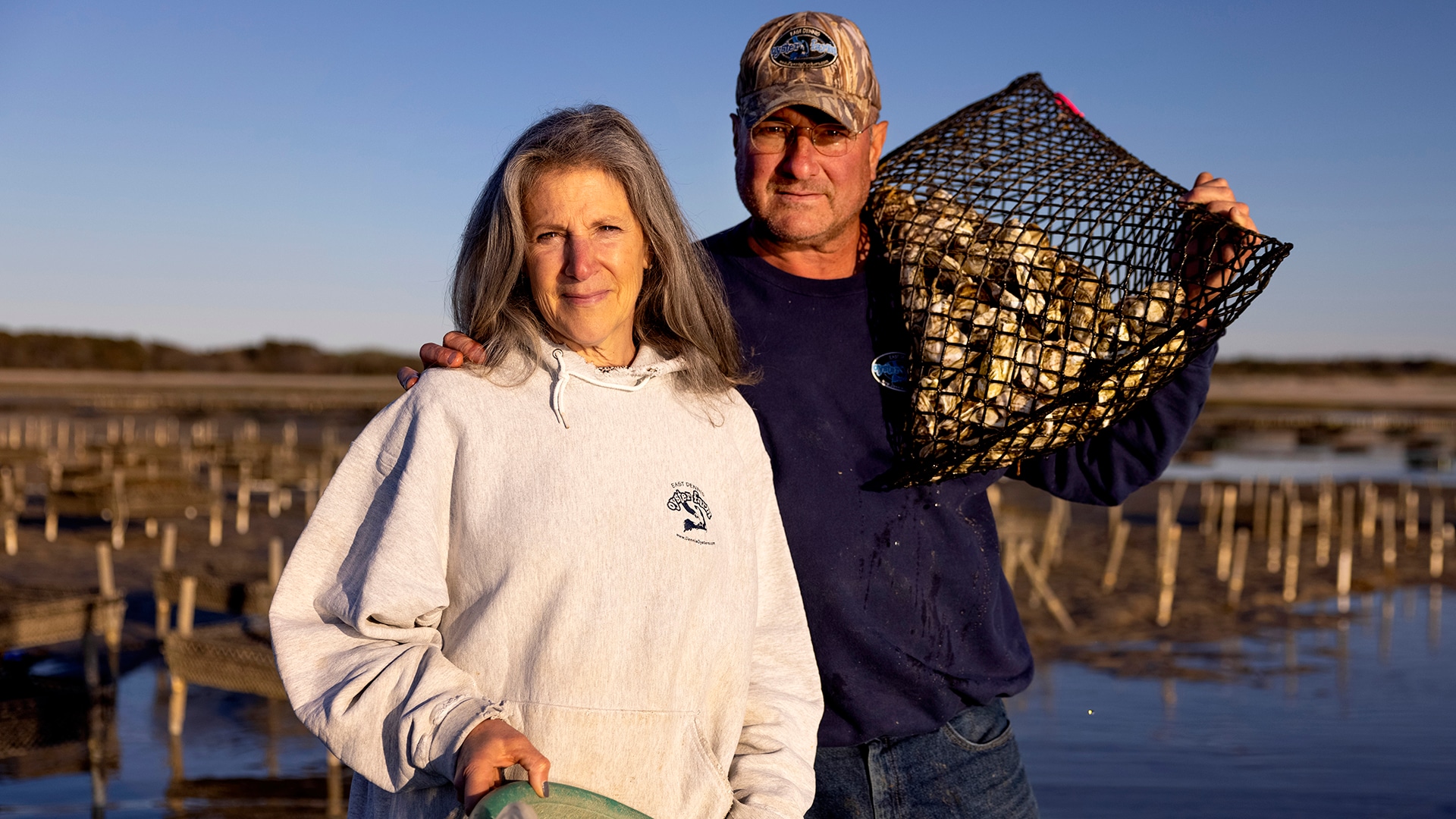Cape Cod Drive Reinforces Benefits of Slow Travel
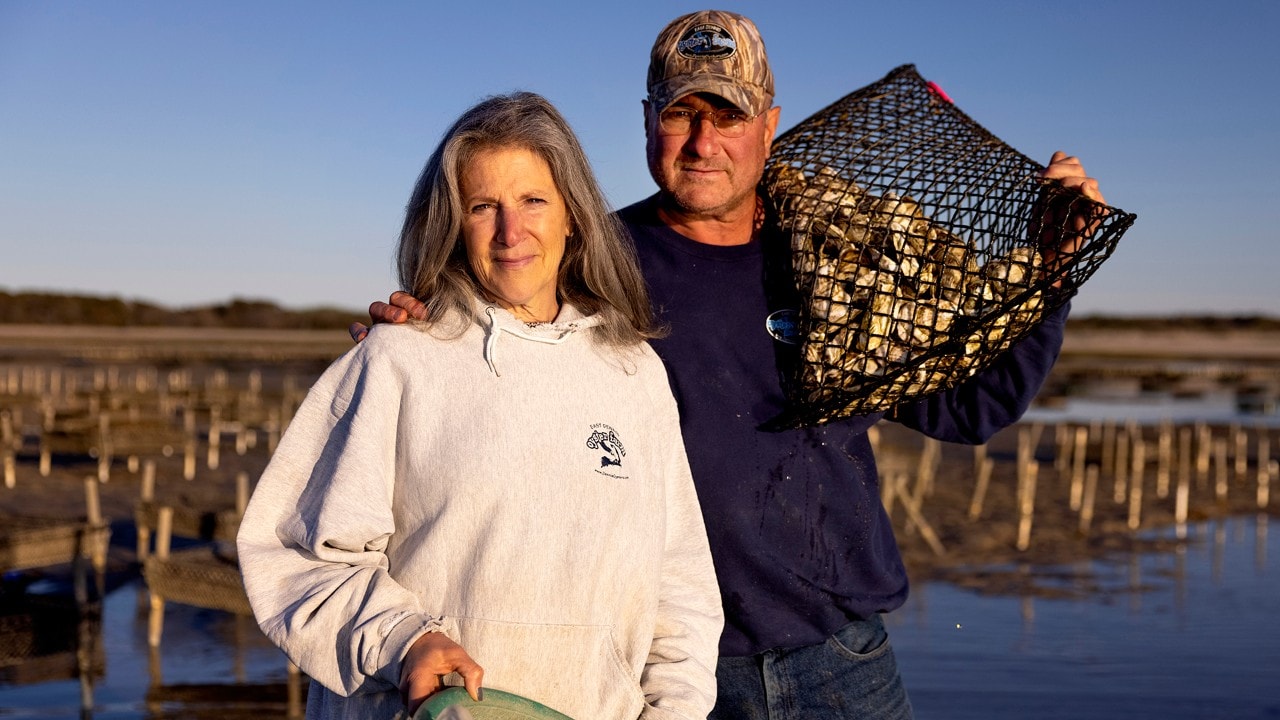
Stephanie and John Lowell own East Dennis Oyster Farm on Cape Cod Bay.
Story by Kassondra Cloos; photos by Michael Ciaglo
Kassondra is a writer from Rhode Island and Michael is a photographer based in Denver.
Massachusetts oyster farmers also recognize the value of investing time.
Wearing borrowed rainboots, I’m sloshing around the East Dennis Oyster Farm on the tidal flats off the coast of Cape Cod, Massachusetts. Just before sunset, John Lowell, who farms these oyster beds with his wife, Stephanie, points to a trickle of saltwater darting its way through the sand toward my feet. The tide is filling in fast, in a way I’ve never seen before, though I grew up in Rhode Island.
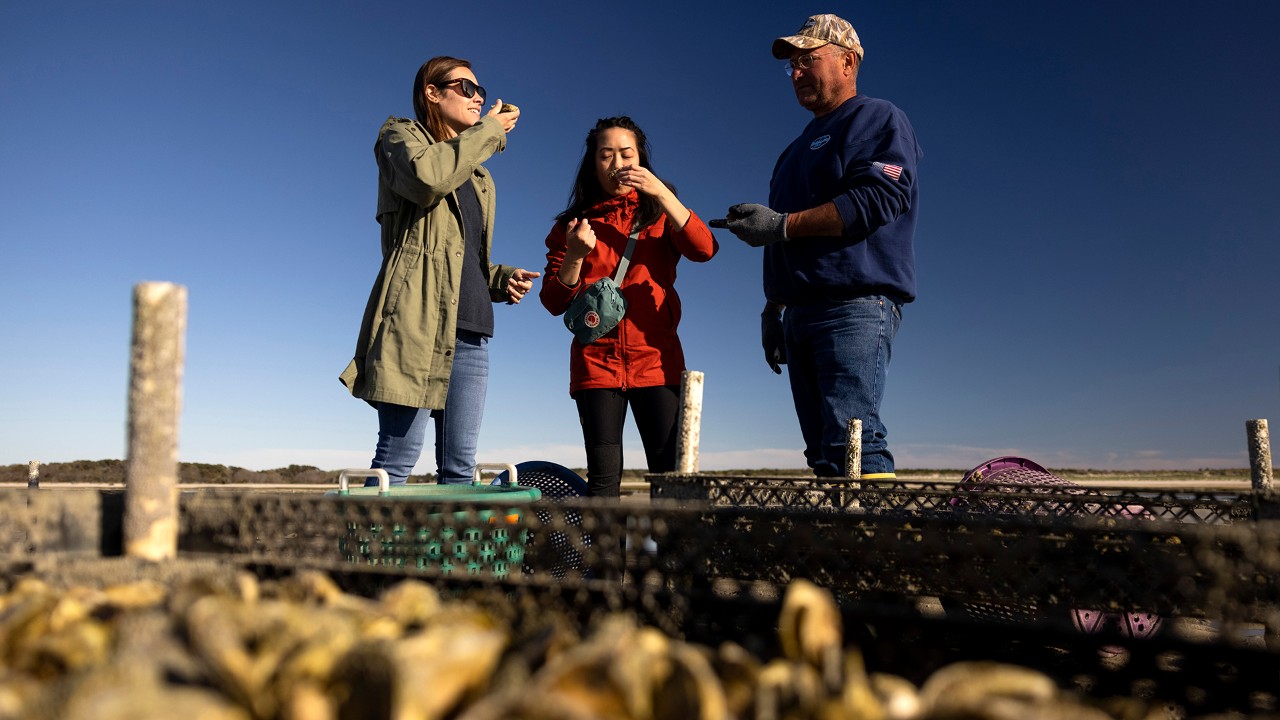
John Lowell (right) explains how he grows his oysters to author Kassondra Cloos (left) and Tammy To.
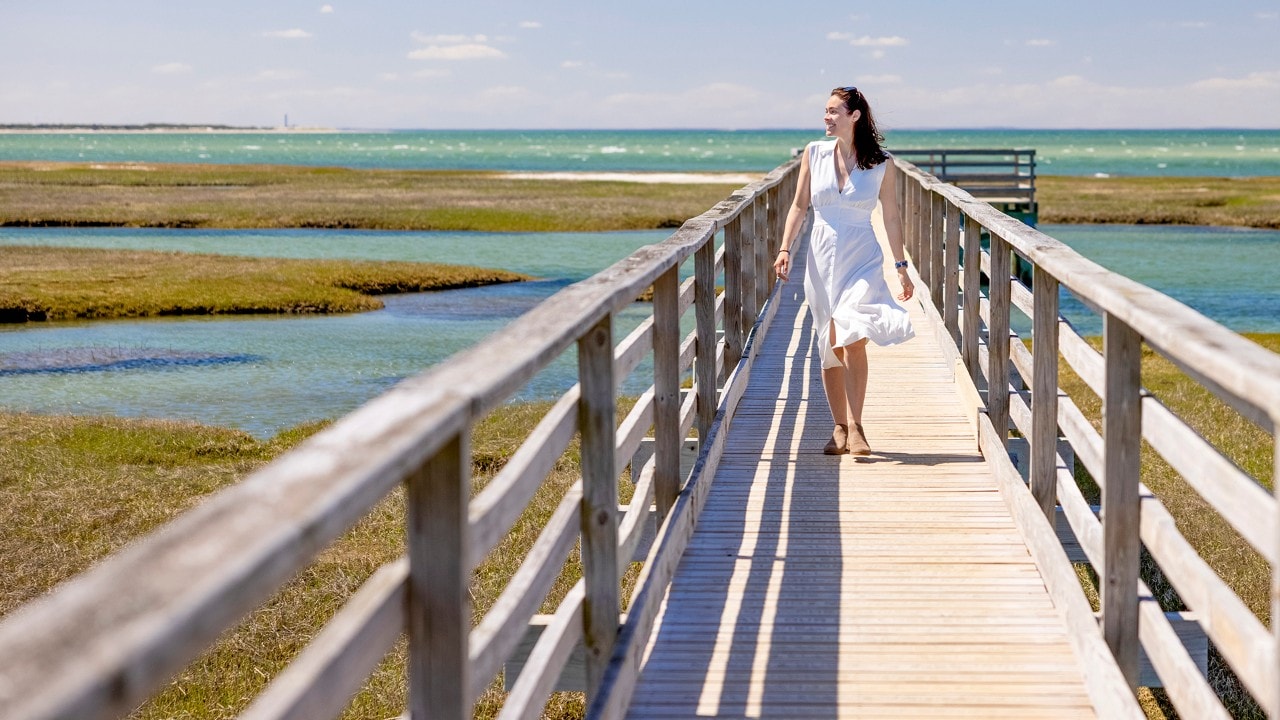
The Bass Hole Boardwalk at Yarmouth, Massachusetts, extends a quarter mile into Cape Cod Bay.
As part of a leisurely road trip in a rental car through New England, two friends and I are touring the Cape. We’re poking along on purpose along Route 6A, which is slower and more scenic than Route 6, the area's main road. This stretch of northeastern beach towns is full of white sand and blue water, along with boardwalks and pedestrian bridges that span both. On the drive, I immediately sense that Cape Cod rejects the rapid pace of life in New York City, five hours away; Boston, a two-hour drive; and even my old stomping grounds of Providence, about 90 miles west.
The nutrient-rich saltwater rushing toward us will nourish the Lowells’ 200,000-plus oysters, which are contained in hundreds of trays suspended on poles — but we’re about to get wet. Earlier in the day, we’d lingered elsewhere on the Cape, and that made us a few minutes late to meet John and Stephanie. John makes it clear as soon as we pull up that every minute counts when you’re battling the tide. We apologize, accept the loan of the waterproof boots and hop into the back of the Lowells’ truck for a bumpy ride onto the beach.
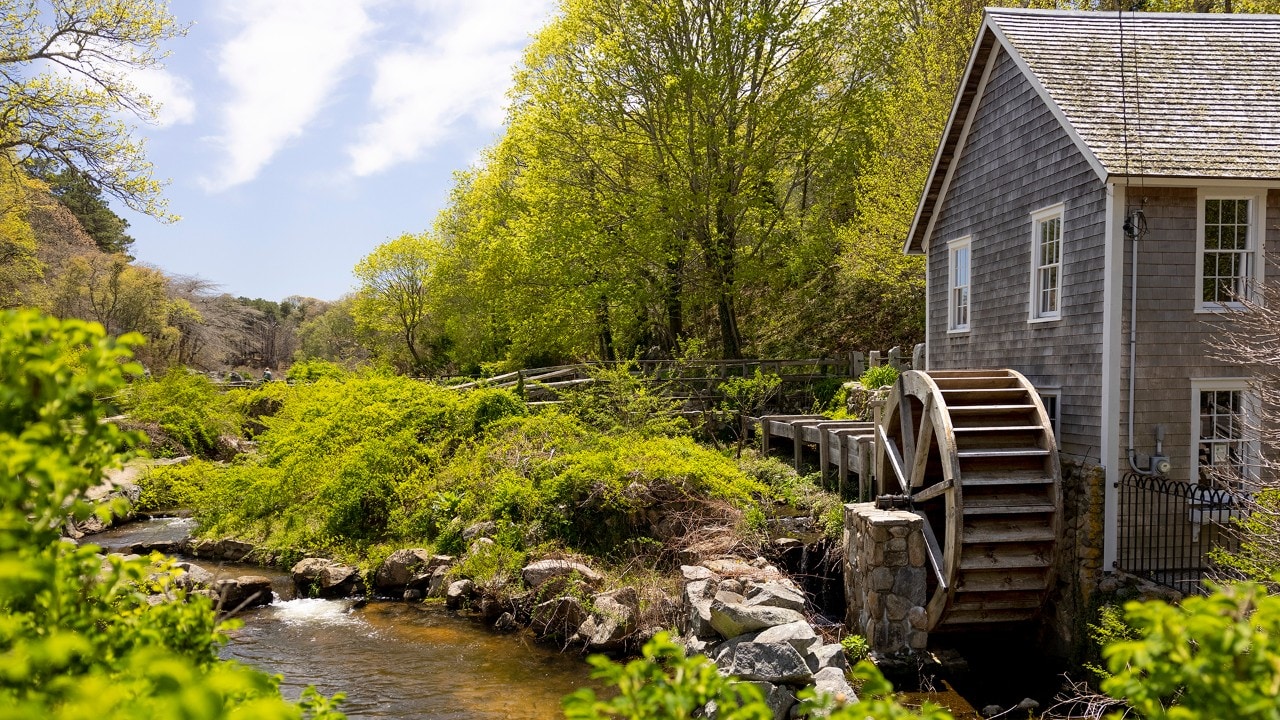
In spring, thousands of herring travel past the Stony Brook Grist Mill to spawn.
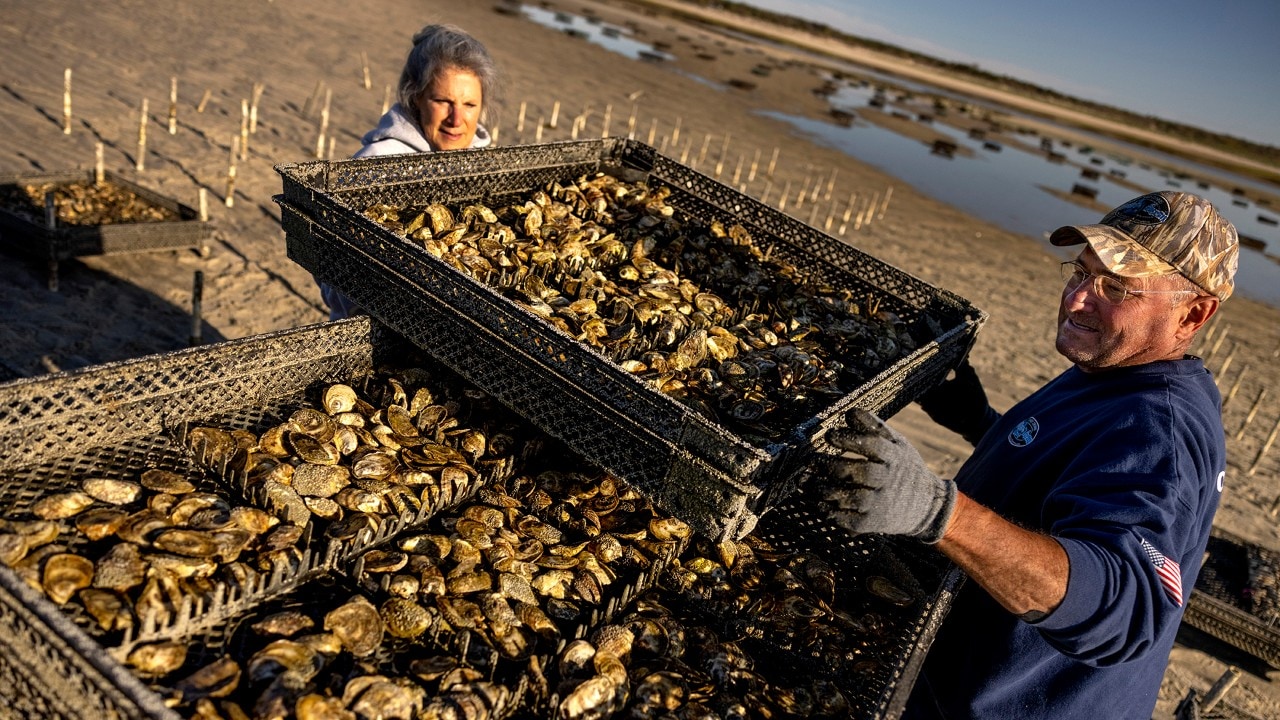
Stephanie and John Lowell load oysters at their farm along Cape Cod Bay.
Oysters 101
East Dennis Oyster Farm has been around since 2003. The Lowells no longer sell to local restaurants but instead focus on a successful catering business, hand-selecting and perfectly shucking oysters for private group events. They kindly have agreed to show Tammy, Michael and me how oysters make it from ocean to raw bar.
As soon as we arrive, I realize I know even less about oysters than I’d thought, and I pepper the Lowells with questions. I learn that every year, Stephanie and John buy tiny oysters, called “seeds,” from breeding hatcheries. Over the course of the next few years, the oysters live in flat, plastic trays stacked on top of one another. The tide covers the trays with 12 feet of water twice a day. At low tide, Stephanie bags up oysters to put them in a mechanical tumbler at home, a process that knocks off barnacles and chips away uneven new growth. This process also forces the oysters to grow stronger and more beautiful shells that are more uniformly shaped. Then, she returns the oysters to the trays to continue growing.
“We have a nice, thick-shelled oyster because we tumble them and take care of them,” John says, noting that he thinks the oysters “love” to be tumbled. He adds that though you can grow oysters in under two years, he and Stephanie tend theirs for three to four years before they’ll sell them. “It’s like pruning an apple tree for a better growth habit,” he says. “It takes you longer to get apples, but when you get them, they’re better.” Suddenly, the cost of oysters —often $3 or $4 a piece — seems a lot more reasonable.
Not that I’m an expert when it comes to oysters. Our visit to Cape Cod occurs just days after I’d first given oysters a proper try at dinner in Mystic, Connecticut. But Tammy quickly declares those from East Dennis Oyster Farm are the best she’s ever tasted. She would know — one of the main reasons she agreed to fly from Houston to join our road trip was to down as many oysters as possible.
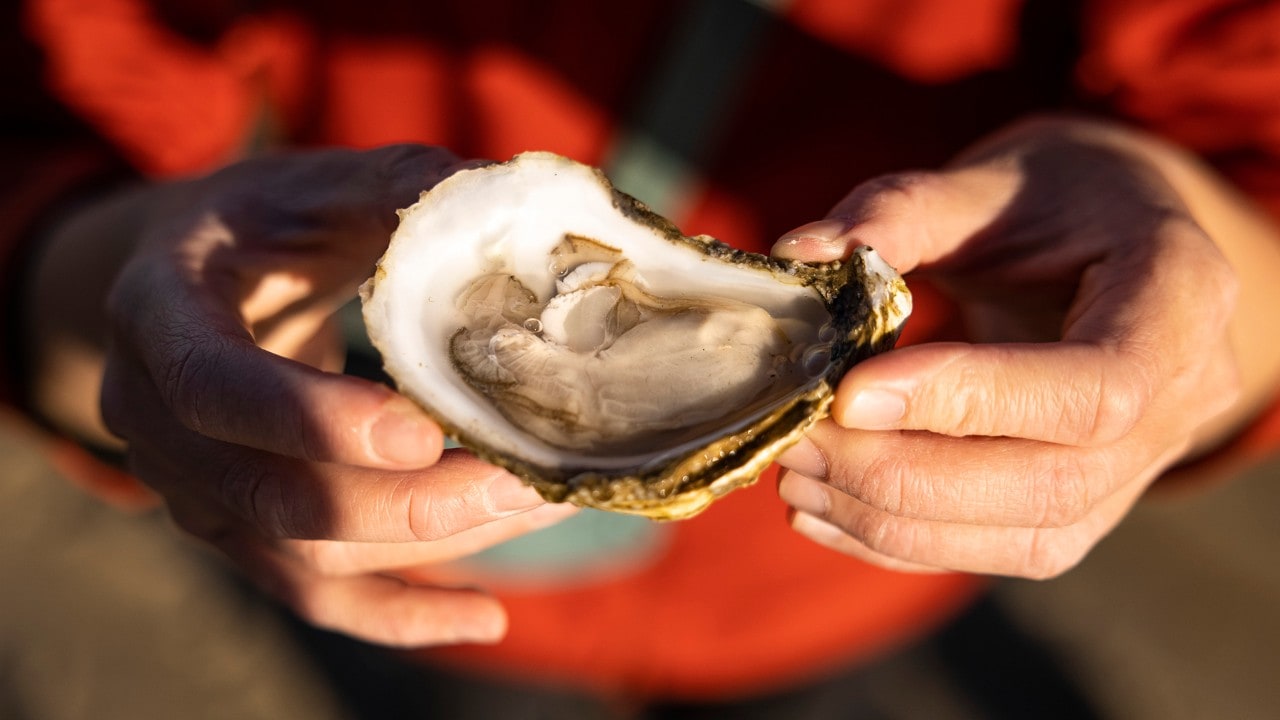
Tammy admires a freshly shucked oyster.
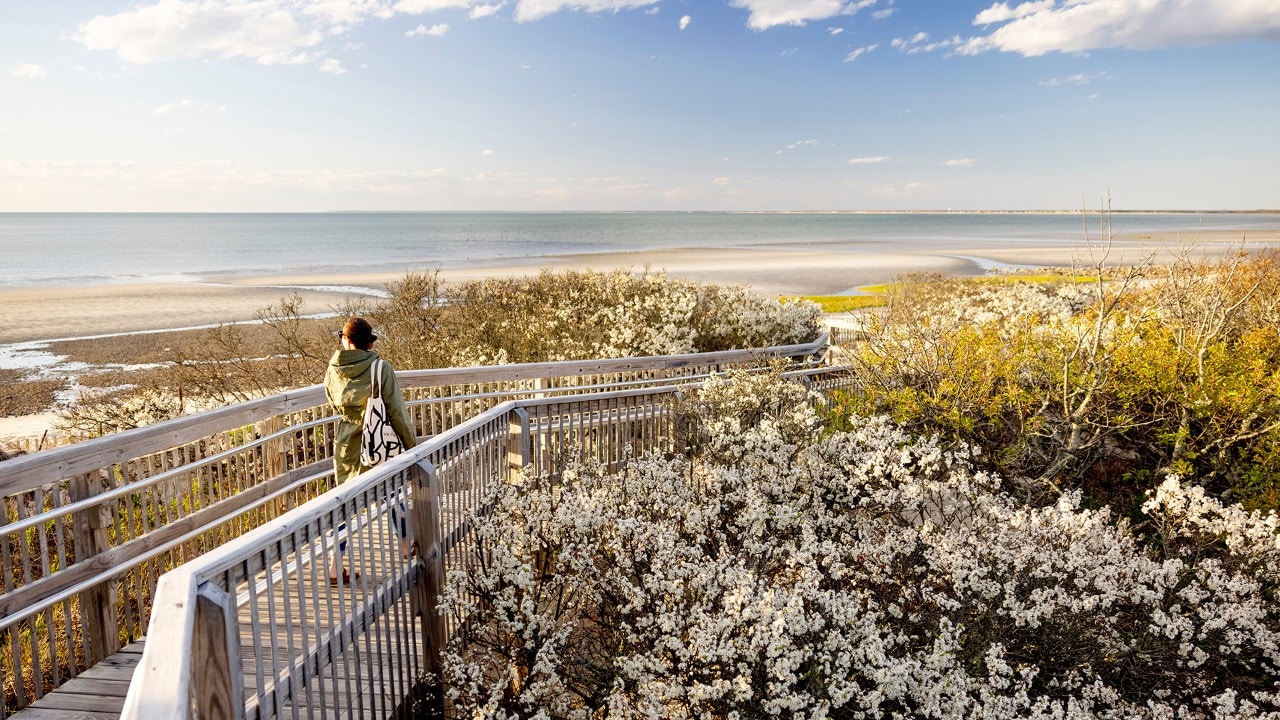
The boardwalk at Ocean Edge Resort & Golf Club leads to the beach.
Beach Time at the National Seashore
Stephanie and John tell us about the shipping interruptions during the pandemic that gave them a chance to tweak their approach to business. It hasn’t been all bad, they say, and John jokes that shellfish farmers invented social distancing, evoking a stereotypical image of gruff New Englanders who like to keep to themselves. But our time with the Lowells overflows with all the warmth and hospitality you hope to stumble upon when traveling.
We’re forgiven for being late, and soon we’re all throwing barbed jibes at one another and laughing like old friends. John gives me a hard time for being from Rhode Island, Massachusetts’s next-door neighbor, and Stephanie gives John a hard time as she sorts all the shellfish while he talks with us. I ask how long they’ve been married. Stephanie deadpans, “About 4 million years.”
Soon we’re out of the boots and back on Route 6A, heading north to Brewster, where we’ll check into the Ocean Edge Resort. After admiring coastal views for the past week, Tammy and I long to spend time on the beach, so the next day we take a hiatus from active sightseeing and drive 20 minutes north to the Cape Cod National Seashore, a 40-mile stretch of sand, marshes, ponds and uplands. We sit and drink in the view of the horizon, absorbing a generous dose of vitamin D as we watch seals pop their heads out of the water close to shore.
My commitment to slow travel continues that evening. Before downing still more oysters at our hotel’s Ocean Terrace restaurant, I sink into a camp chair on the resort’s private beach while Michael photographs a stunning sunset. Cape Cod, I realize, provides the perfect antidote to the background noise of hectic, day-to-day life. A trip here leaves you with a desire to slow down in all regards — unless it’s to rush back.
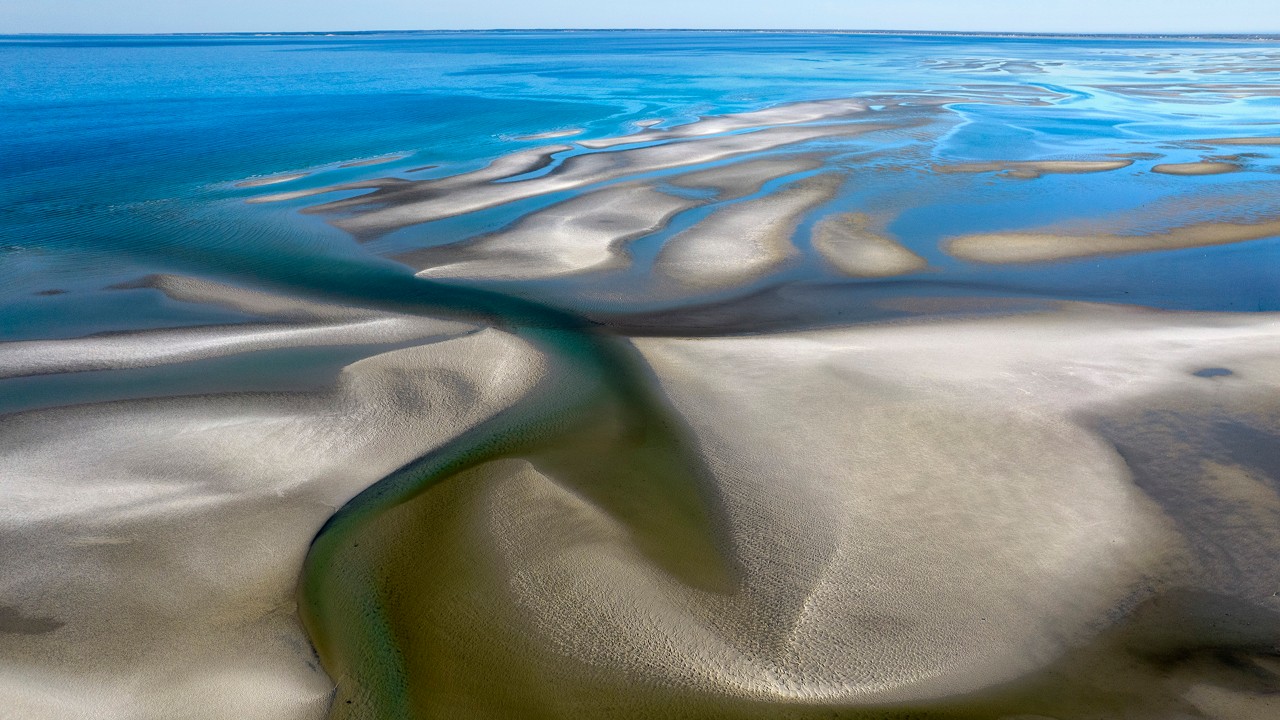
Sand bars stretch into Cape Cod Bay at low tide.
Related
Read more stories about Massachusetts.
- Weekend Getaway from Boston to Rockport, Massachusetts
- Road Trip to Maple Sugar Shacks in New England
- Weekend Getaway to Yoga Retreats of the Northeast
- Provincetown
- Cape Cod Road Trip
- Massachusetts Trips

